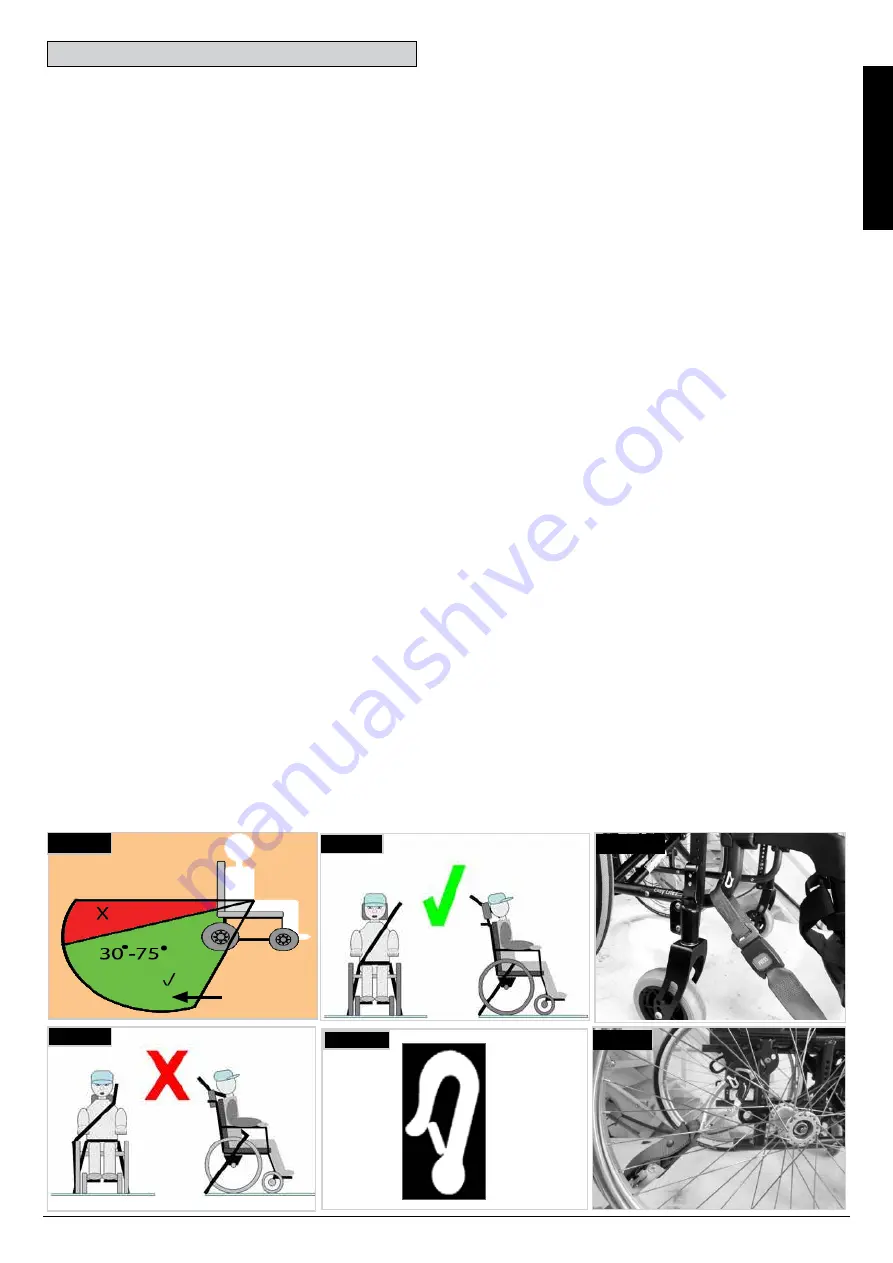
ENGLISH
39
Sopur Easy Life RT Rev.F
3. The attachment points to the chair are the inner front side
frame just above the castor, and the rear side frame. The straps
are fitted around the side frames at the intersection of the
horizontal and vertical frame tubes. (see Fig. G - H)
4. The tie down symbol (Fig. F) on the wheelchair frame
indicates the position of the wheelchair restraint straps . The
straps are then tensioned after the front straps have been fitted
to secure the wheelchair.
USER WEIGHT LESS THAN 22 kg
When the user being transported is a child, less than 22Kg
mass and the vehicle involved has less than eight (8) seated
passengers it is recommended that they be transferred to an
UNCE Regulation 44 compliant child restraint system (CRS).
This type of restraint system provides a more effective occupant
restraint system than the conventional 3 point occupant restraint
system and some CRS systems also include additional postural
supports to assist in maintaining the position of the child when
seated.
Parents or care providers may consider the option, in some
circumstances, for their child is to remain in their wheelchair
whilst in transport due to the level of posture control and
comfort provided by the set up in the wheelchair.
We would recommend in such circumstances that a risk
assessment be carried out by your healthcare professional and
relevant competent persons.
Transportability – positioning of wheelchair tie down
restraints on wheelchair
The wheelchair secured with front wheelchair tie down
restraints. (Fig. G).
Position of the rear wheelchair tie down restraint, (Fig. H).
12. The safety of the user during transportation depends upon
the diligence of the person securing the tie-down restraints and
they should have received appropriate instructions and/or
training in their use.
13. Wherever possible remove and stow safely away from the
wheelchair all auxiliary equipment, for example:
Crutches, Loose cushions and Tray Tables.
14. Articulating/elevating legrest should not be used in the
elevated position when the wheelchair and user are being
transported and the wheelchair is restrained using Wheelchair
Transport and Occupant Restraints.
15. Reclining backrests should be returned to an upright
position.
16. The manual brakes must be firmly applied.
17. Restraints should be mounted to the vehicle “B” pillar and
should not be held away from the body by wheelchair
components such as armrest or wheels.
Occupant Restraints Instruction:
1. The pelvic restraint belt must be worn low across the front of
the pelvis so that the angle of the pelvic belt is within the
preferred zone of 30 to 75 degrees to the horizontal.
A steeper (greater) angle within the preferred zone is desirable
i.e. closer to, but never exceeding 75°. (Fig. C).
2. The upper torso restraint belt must fit over the shoulder and
across the chest as illustrated Fig. D and E.
Restraint belts must be adjusted as tightly as possible
consistent with user comfort.
Restraint belt webbing must not be twisted when in use.
The upper torso restraint belt must fit over the shoulder and
diagonally across the shoulder as illustrated Fig. D and E.
Transportability Cont..
Fig. D
Fig. E
Fig. C
PREFERRED ZONE
Fig. F
Fig. G
Fig. H
















































